Surgical superstar volunteers help with pet spay/neuter
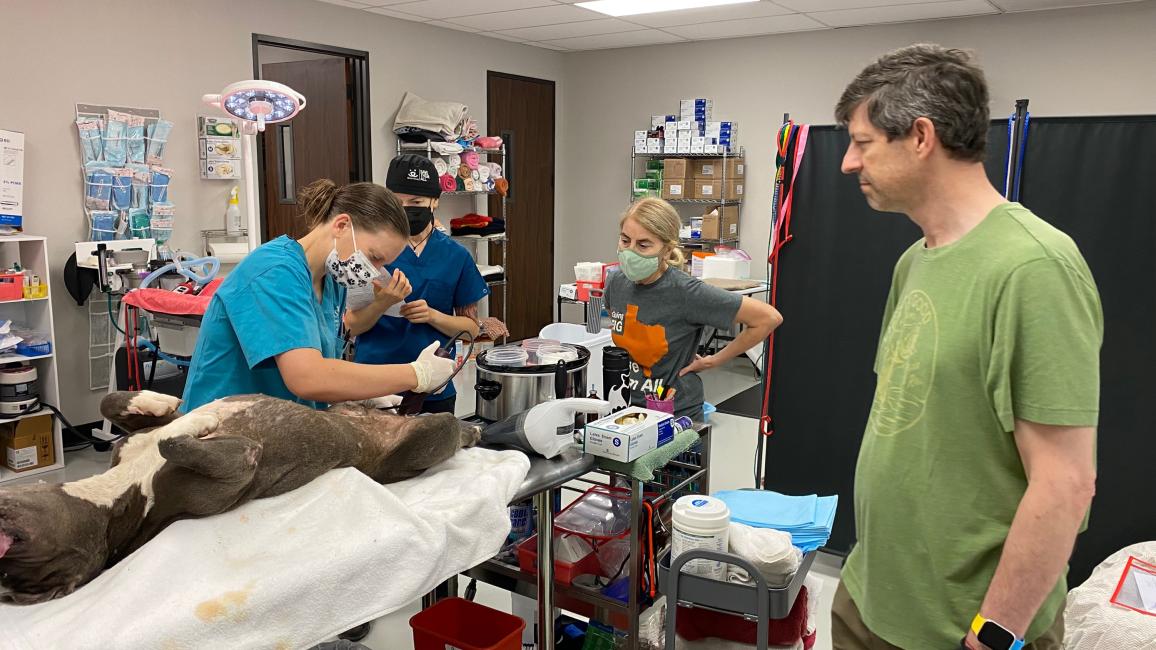
It all starts around 7 in the morning. The whole day is a flurry of activity with everyone on the team working toward the same goal: spay or neuter and care for the 40-some dogs and cats with surgery appointments that day.
Forty pets served is a lot in one day, but it’s possible thanks to a team environment where everyone knows their jobs and does them well. There are dirty jobs and desk jobs, jobs cuddling puppies and cleaning up, and each is just as important as the next in providing each pet with excellent care.
What’s especially inspiring about this team is that many people on it are volunteers.
[4 volunteers helping animals in unique ways]
Spaying and neutering dogs and cats is an incredibly important part of reaching no-kill in any community, and that’s why Best Friends offers it for free in Houston. Volunteers are integral to just about everything Best Friends does across the country, and the surgery day volunteers in Houston are proof of that. They are simply amazing.
Dr. Erin Katribe, DVM, the Best Friends medical director who lives in Houston, is the one doing the surgeries each week. “Our volunteers are absolutely part of the team, and we couldn't do lifesaving on the scale that we are without their dedicated support,” she says.
The work is far from easy but worth it to everyone who shows up to donate time. So, who are these surgical superstars and why do they sign up to pitch in each week? Read on to find out.
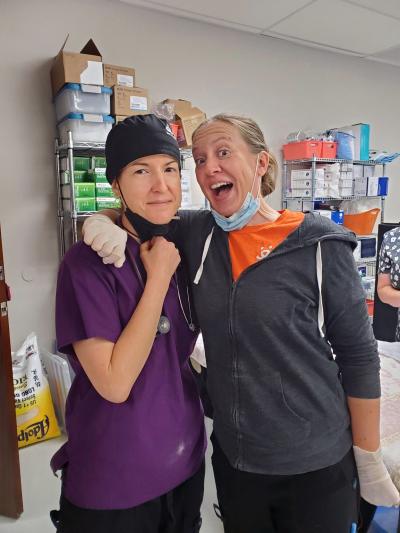
All systems go for spay/neuter surgeries
Magan Gonzales is the Best Friends veterinary programs coordinator in Houston, one of the two staff people who organize surgery days with a lot of help from the core team of volunteers. People start dropping off animals around 8 a.m. “It’s usually very hectic in the mornings,” she says. “Our biggest clients right now are our shelter partners, who show up in their big animal control buses.”
Then there are people who humanely trap free-roaming cats to have them spayed or neutered, vaccinated and ear-tipped before returning them to their outdoor homes. There are pets in Best Friends’ foster program, too. But no matter how they arrive, each pet is there for much-needed medical care.
Volunteer Penny Burleson may be one of the first persons encountered by arriving pets. Her focus is on checking in animals, logging where they come from and weighing them for surgery. She also ensures there’s a clean cage waiting for each one after a procedure.
“Penny is there every single surgery day,” says Magan. “Once surgery gets started, she assists with making sure the animals stay warm. And she cleans up all the messes from the animals throughout the day. We often have puppies and they make a huge mess, so Penny is very, very helpful.”
None of the jobs are glamorous, but when you care about what you’re doing and know that it makes a difference, it’s worth it.
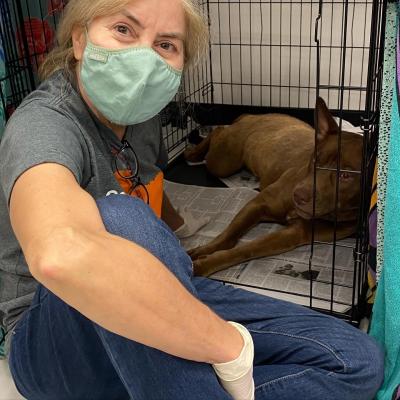
Working smarter
Chuck Cavin didn’t have experience assisting with surgeries but, he says, the staff was patient teaching him what he needed to know. And in turn, he used his expertise to help the team save time.
One of Chuck’s key roles is preparing medications for each animal in the morning. After noticing that people spent a lot of time looking at a chart to fill in the drug amounts for each animal based on weight, he told Magan: “You know what? I think I can make a spreadsheet that just fills this in for you.” So, he did. “It has helped tremendously,” says Magan.
[5 men making a difference for homeless pets]
Like the rest of the team, Chuck is happy to help with anything that needs doing. One day he was asked to help bathe some puppies overrun with fleas. “Although I was about to leave, I couldn’t pass up the opportunity,” he says. “We cleaned them thoroughly and afterward they began to shiver. A few of us held them like swaddled babies to warm them up. They fell asleep slowly, one by one.”
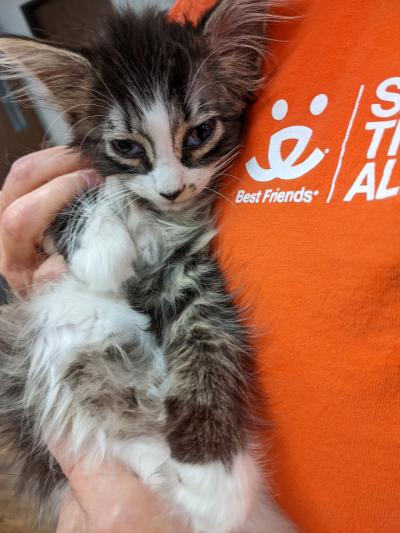
High volume, high quality spay/neuter
Could the staff get through surgery days without volunteer help? Yes. Could they consistently serve so many animals? Nope. That’s what makes volunteer help so valuable. Volunteers make it possible to help more dogs and cats in need.
“Utilizing volunteers has allowed us to increase surgical capacity safely and efficiently, which means more surgery slots for our shelter partners and community cats,” says Dr. Erin. “We can provide high quality care while also providing services to a large number of animals.”
Jill Katribe, Dr. Erin’s wife, volunteers as a technician assistant, prepping the patients, monitoring anesthesia during surgery and anything else that’s needed. “I always joke that I didn't volunteer to help in surgery, but that my wife ‘voluntold’ me to,” Jill says. “But I'm proud to be a part of the Best Friends Houston volunteer surgery team. The surgery program is so important to the communities here and knowing that we're saving lives is quite a rewarding feeling. Saving lives is really what it's all about.”
Meanwhile, Bob Burleson assists as animals arrive, but he’s at his busiest once surgery is underway. “During the day I collect the used (surgical) instruments, wash and disinfect them, build and sterilize the surgical packs and make sure Dr. Erin doesn't get slowed down,” he says.
Magan says Bob’s help is essential to keeping things running smoothly. He works the autoclave (a machine that uses steam for sterilizing surgical instruments) and keeps it going all day. “We typically do more surgeries than we have instrument packs, so we wouldn’t be able to get through the day without cleaning and remaking them. He’s constantly working on the autoclave and knows it better than anyone else does.”
Bob says: “It is a personal goal of mine to try and stay ahead of Dr. Erin! Once she's in her zone, she is off and running.”
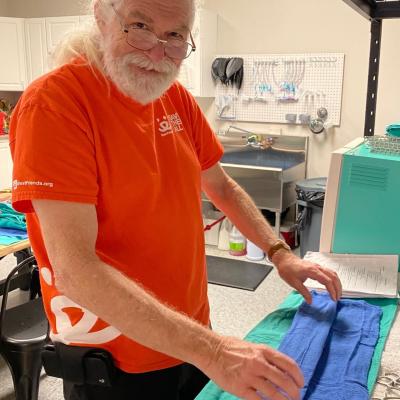
The paper pusher extraordinaire
Soon after surgeries begin, Maggie Schroeder arrives to do another important job: the paperwork. Animals start going home in the afternoon and, as Magan says: “The shelters expect paperwork right away. So, Maggie works on it all day and she has it ready for them.”
“I’m the paper pusher,” says Maggie, who enters into a computer every animal’s age, weight and type, along with medication used, surgical notes other information. She also must decipher everyone’s handwriting to do it well. “I worked in corporate finance for 30-plus years, so computers are good friends.”
[Unique volunteer roles at Florida animal shelter]
“It’s incredibly important that all the information entered is accurate, and that was drilled into me throughout my career,” she adds. “Spay/neuter is so, so important to me and this is my way to contribute.” She enjoys helping and doing a job that may not sound as fun as cuddling puppies, but it’s one that she likes just the same.
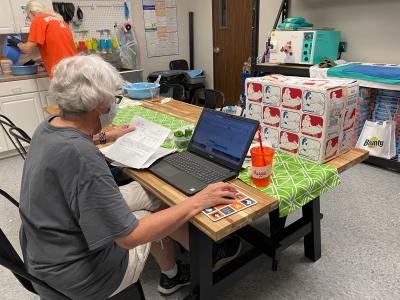
Teamwork to Save Them All
Sometimes pets need more than just a spay or neuter surgery. Dr. Erin and the team can help pets with wounds, amputations when necessary and other more complicated surgeries. But the greatest reward is having a hand in preventing more unplanned litters of puppies and kittens.
“The only way to Save Them All is to have fewer to save,” says Bob. “We had no specific background skill set before we got involved. We just saw an opportunity to make a difference in the horrific number of homeless animals on Houston's streets. We can only make a difference through our actions and education about the problem.”
Dr. Erin says her favorite thing about our volunteers is their unwavering commitment to Best Friends and the animals. And the feeling is mutual among the volunteers, who are just as committed to helping each other as they are to the animals. “I couldn’t pick a better group of people to be with,” says Maggie. “We laugh together, cry together and even sing along with the Siberian huskies as they come out of anesthesia.”
It's all part of a good day’s work.
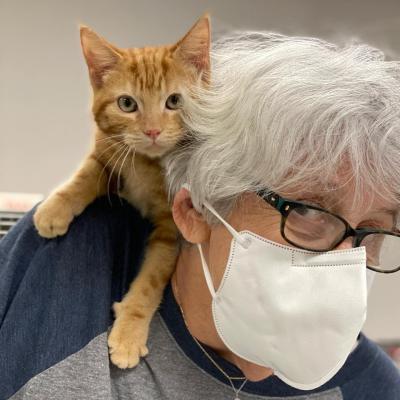
Volunteer to help pets
There are countless way to help pets where you live, so why not reach out to your local shelter and get involved?
Read more
Retirement for lifesaving: Couple puts in hours for Houston pets